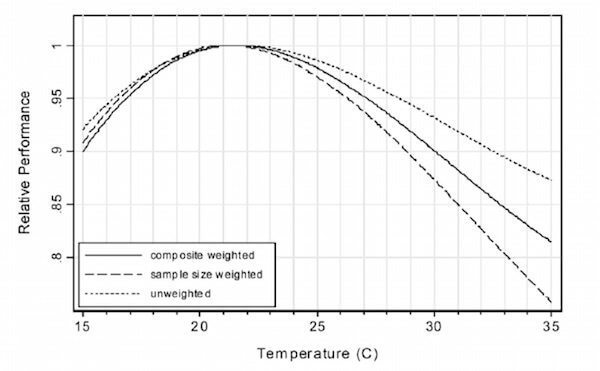Indoor Environmental Quality, Work Performance, and Health

Indoor Environmental Quality (IEQ),Work Performance, and Health
A peer reviewed paper on quantitative relations between indoor environmental quality (IEQ) and work performance or health from the Helsinki University of Technology and the Lawrence Berkeley National Laboratory presents relationships between ventilation rates, temperature, and perceived air quality to short term sick leave, work performance, and sick building syndrome symptoms. Based on published studies regarding IEQ and workers, the paper’s authors Olli A Seppänen and William J Fisk, were able to quantitatively account for the influence of IEQ and related building conditions on worker health and productivity.
The following tables demonstrate these relationships:

Sick Leave and Ventilation Rates
This table represents sick leave prevalence compared to the ventilation rates in offices, barracks, and nursing homes based on separate referenced studies. In all of the studies and in the particle concentration model, sick leave and illnesses decrease as ventilation increases.
Work Performance and Ventilation Rates

These two tables represent the increase in work performance compared to increased ventilation based on a model created by the authors based on 7 peer reviewed workplace performance studies. As ventilation increases, work performance also increases.
Work Performance and Temperature

Temperature is also shown to affect work performance. The above table represents relative performance to temperature, with the highest performance at 21 and 22 degrees Celsius (69 to 72 degrees Fahrenheit).
Sick Building Syndrome and Work Performance
Sick Building Syndrome (SBS) refers to various nonspecific symptoms that occur in the occupants of a building. The authors reviewed dozens of peer reviewed studies and determined that a relationship does exist between SBS and work performance. The studies varied from controlled laboratory tests to field experiments in school and office environments.
Out of a total of 24 reviewed studies, 15 field studies (either cross sectional or experimental) reported associations between SBS symptoms and self-assessed productivity in office environments. In addition, two studies reported an association between SBS symptoms and objectively measured performance in school environments. Five of the laboratory studies reported an association, but did not indicate a causal relationship, between increased SBS symptoms and diminished objectively measured performance in tests that included tasks emulating real work.
Furthermore, the study found that the cost of poor IEQ can be higher than energy costs space conditioning and ventilation, and that many measures taken to improve indoor IEQ will be highly cost effective when accounting for the monetary savings resulting from improved health or productivity.
In conclusion, the study identified quantitative relationships between ventilation rate and illness caused absence, and determined that it is possible to estimate quantitatively how work performance relates with ventilation rate, air temperature, and perceived air quality. Indoor environmental quality does appear to affect occupant healthiness and performance as well as the financial bottom line of companies. These relationships should be considered when decisions are made about building design and operation.




